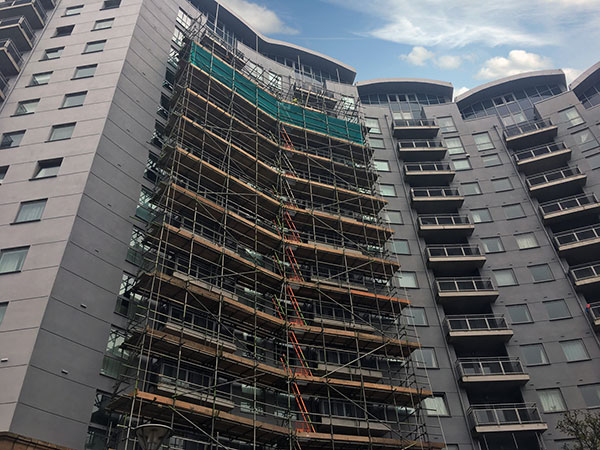In the fast-paced world of development, bringing a vision to life requires detailed planning, skilled execution, and the right support systems in place. At the center of many business projects lies an unrecognized hero: scaffolding. Beyond its role as a temporary structure, commercial scaffolding serves as a vital component that boosts productivity, guarantees safety, and enables the efficient execution of intricate builds. Understanding its importance is paramount for anyone involved in the construction industry.
From high-rise buildings to retail spaces, the types of scaffolding used can differ significantly based on project needs. Each type offers specific benefits and trials, making it important to choose the right system for the project at hand. As https://notes.io/wGLQE explore the multifaceted world of industrial scaffolding, we will investigate its significance, safety aspects, and the myriad options available to ensure that your project is not only successful but also compliant with required regulations. Join us as we scaffold your vision, providing information into this critical aspect of current construction.
Grasping Commercial Scaffold Systems
Business scaffolding is a provisional structure utilized to support work crews and materials during the building, maintenance, or repair of buildings and other big projects. It allows workers to access heights safely and efficiently, making it an essential element of modern building practices. This type of scaffolding is designed to accommodate the specific needs of business projects, whether it's a elevated building, a stadium, or a retail space. By providing a sturdy and secure platform, business scaffolding improves the workflow and productivity of building teams.
There are different types of scaffolding used in corporate projects, including prefabricated scaffolding, tube and clamp systems, and system scaffolding. Each type presents distinct advantages based on the project requirements. Modular scaffolding is favored for its flexibility and ease of assembly, while tube and clamp systems provide versatility for complex structures. Understanding the distinctions between these types is essential for selecting the right scaffolding for particular applications and ensuring the safety and productivity of the job site.
The function of scaffolding in construction extends beyond mere support. It boosts job site safety, enables access to hard-to-reach areas, and can be customized to individual project demands. Properly placed scaffolding reduces the risk of accidents and injuries, making compliance with safety regulations a top priority. Additionally, scaffolding is vital for maintaining productivity, allowing workers to carry out their tasks efficiently, even when operating at considerable heights. This foundational understanding lays the groundwork for understanding the many facets of commercial scaffolding in the building industry.
Security and Compliance in Scaffold Systems
Safety and adherence are essential in the scaffold industry, as they directly impact worker well-being and project success. Compliance with regulations such as OSHA guidelines ensures that scaffold systems are constructed, constructed, and maintained correctly. This not only safeguards workers from accidents but also helps avoid legal issues and expensive penalties for not complying. Ensuring that scaffolding is set up correctly and meets all required safety criteria is vital for ensuring a safe work site.
Training is a critical part of scaffold safety and compliance. Workers should be well-versed in proper scaffold use, possible dangers, and safety protocols. Regular training sessions can emphasize the importance of adhering to safety protocols, enabling crews to identify unsafe conditions and take appropriate actions. Furthermore, maintaining up-to-date records on education can help ensure that every team member are equipped with the latest knowledge and training required for scaffolding safety.
Performing regular safety inspections is another essential aspect of ensuring compliance in scaffolding. Safety checks should take place prior to, while, and after setup to identify any potential hazards or issues in the scaffolding structure. These assessments should include checks for stability, weight limits, and overall state of the scaffolding equipment. By actively addressing problems and implementing remedial actions, contractors can significantly reduce the likelihood of injuries and enhance overall safety on job sites.
Support Structures Solutions for Different Applications
Regarding different categories of business projects, scaffolding systems must be adapted to meet unique requirements and challenges. Specifically for tall construction, durable scaffolding structures are necessary to ensure employee safety while providing secure access to higher levels. These projects often utilize prefabricated scaffolding, allowing efficient assembly and disassembly while meeting the dynamic needs of high-rise structures. Tailored scaffolding solutions are also frequent in remodeling projects, where unique building layouts demand adaptable designs to support both recent and existing structures.

Within retail and office developments, scaffolding plays a crucial role in preserving design integrity while providing functionality. These settings often require scaffolding that limits disruption to the adjacent area and enhances visibility for customers. Scaffolding systems designed for such projects often feature elements that allow simple access without interfering with day-to-day operations, ensuring that businesses can carry on uninterrupted during construction.
Moreover, massive venues such as stadiums and schools present distinctive challenges in scaffolding design and implementation. These developments often necessitate significant scaffolding to support construction or renovation activities, ensuring proper safety protocols are in place. Scaffolding systems in these scenarios must consider large groups and site accessibility, thus requiring careful planning and execution to ensure the safety of both employees and the general public.
